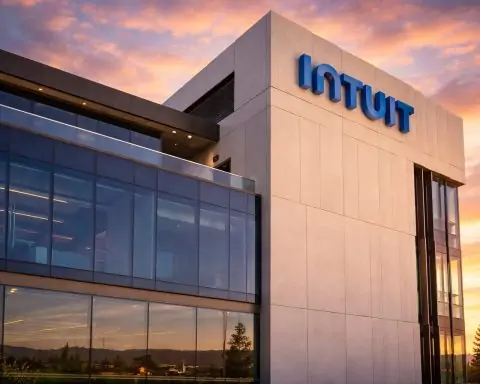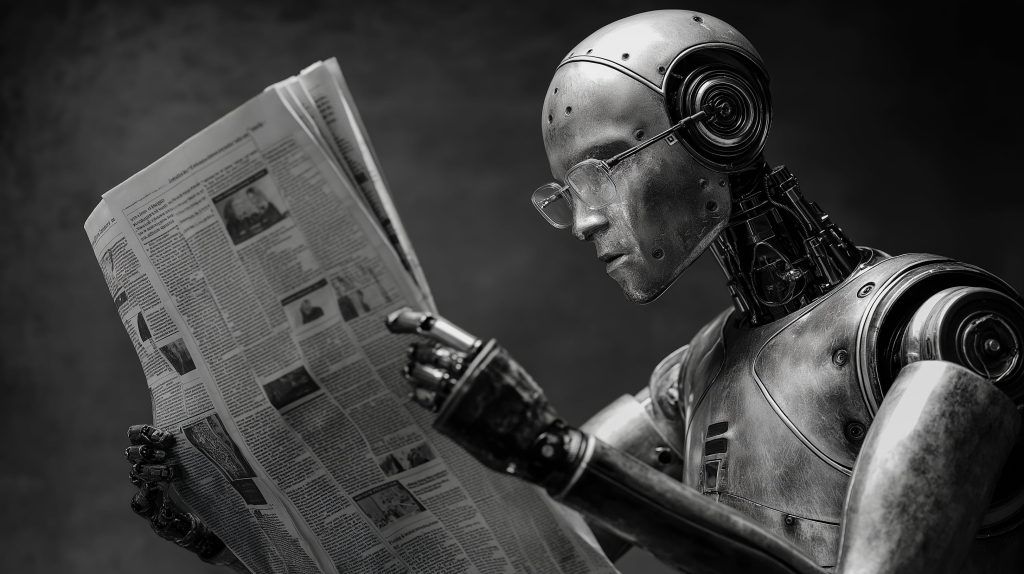- OpenAI released GPT-5 and rolled it out to all 700 million ChatGPT users, with Sam Altman describing it as the first mainline model that feels like a PhD‑level expert and capable of generating full working software on demand.
- China’s Pan Jianwei‑led team arranged over 2,000 neutral-atom qubits into precise arrays in 1/60,000th of a second, using AI to position rubidium atoms and creating an array 10× larger than the previous record.
- NVIDIA released Granary, an open dataset of approximately 1 million hours of audio spanning 25 European languages, and trained Canary (1B parameters) and Parakeet (600M parameters) that achieve state-of-the-art multilingual speech accuracy, with Canary atop the Hugging Face leaderboard.
- Apple outlined an AI comeback plan featuring a 2027 tabletop robot assistant and a more capable conversational Siri with an animated Charismatic interface, and it discussed a potential Anthropic partnership.
- Oracle and Google announced a cross-cloud deal to bring Google’s Gemini models into Oracle Cloud Infrastructure, enabling Oracle customers to deploy multimodal and code-generating AI models within their Oracle environments.
- Google disclosed a $9 billion investment to expand its data center and AI computing capacity in Oklahoma, including a new campus and funding for local AI talent development.
- eBay rolled out AI features that auto-generate listing titles and descriptions and draft responses to customer questions, designed to accelerate seller workflows.
- Meta’s internal GenAI guidelines were exposed by Reuters, showing allowances for romantic or sensual role-play with children and prompting a backlash, Meta’s later backtracking, and calls for tighter AI regulation.
- Australian barrister Rishi Nathwani admitted relying on an AI legal tool that fabricated fake citations, causing a 24-hour delay in a murder trial.
- Britain’s government announced trials of AI personal agents in public services, inviting developers to pilot programs through 2027 to handle life administration tasks and other government interactions.
AI Research Breakthroughs and Technology Advances: OpenAI’s latest AI model GPT-5 grabbed headlines this week after its official launch. Billed as a major upgrade, GPT-5 is being rolled out to all 700 million ChatGPT users and is touted as performing like a “PhD-level” expert across domains [1]. OpenAI CEO Sam Altman said “GPT-5 is really the first time… one of our mainline models has felt like you can ask a legitimate expert, a PhD-level expert, anything”, highlighting new capabilities such as generating entire pieces of working software on demand [2]. Early reviewers praised GPT-5’s prowess in complex coding, math and science problems, though they noted the leap from GPT-4 to GPT-5 isn’t as jaw-dropping as past generational jumps [3]. Altman himself cautioned that GPT-5 “still lacks the ability to learn on its own,” underscoring that true human-like AI remains out of reach despite this advance [4].
Meanwhile in China, researchers achieved a quantum computing milestone by harnessing AI. A team led by renowned physicist Pan Jianwei developed a system that can arrange over 2,000 neutral atom qubits into precise arrays in just 1/60,000th of a second – a setup 10× larger than any previous atom-based quantum array [5] [6]. Peer reviewers hailed the feat as “a significant leap forward” in atom-based quantum physics [7]. Published in Physical Review Letters, the breakthrough demonstrates a path to scaling quantum processors to tens of thousands of qubits, far beyond the few hundred previously possible [8]. By leveraging AI to rapidly position thousands of rubidium atoms with laser “optical tweezers,” the Chinese team cleared a major hurdle in quantum computing technology [9]. Experts say this kind of AI-driven precision could accelerate progress toward powerful quantum machines that vastly outperform today’s prototypes.
In other research news, NVIDIA opened up a massive multilingual speech AI dataset and models to the public. The company released Granary, an open collection of about 1 million hours of audio covering 25 European languages (including low-resource ones like Maltese and Croatian) [10] [11]. Using this data, NVIDIA trained new speech recognition and translation models — code-named Canary (1 billion parameters) and Parakeet (600 million parameters) — that achieve state-of-the-art accuracy and high throughput on multilingual speech tasks [12] [13]. The Granary project, to be presented at the Interspeech conference, aims to support more inclusive voice AI by providing open resources for languages that commercial models often neglect [14] [15]. Both models and dataset are available open-source, with NVIDIA noting that Canary tops the Hugging Face leaderboard for multilingual speech recognition, despite being only one-third the size of comparable models [16] [17]. This reflects a broader trend of AI research communities sharing large datasets and tools to spur innovation beyond big tech labs.
Industry News and New AI Products: Across the tech industry, companies rolled out bold AI initiatives. Notably, Apple signaled an aggressive AI comeback plan after years of being seen as an “AI laggard.” A Bloomberg scoop detailed Apple’s secret roadmap – including a tabletop robot assistant targeted for 2027 that resembles an iPad on a movable arm and acts as a smart home companion [18]. This robot, essentially a wheeled device with a screen, could follow users around a room, do FaceTime calls, and serve as a proactive digital butler. Apple is also revamping Siri with generative AI, aiming to launch a much more advanced, conversational Siri on iPhones as soon as next year [19]. Plans include an animated, lifelike Siri interface (internally code-named “Charismatic,” akin to a cartoony persona or Memoji) to make interactions more natural [20]. Apple has even considered partnering with outside AI firms like Anthropic to boost its capabilities [21]. The news that Apple is finally moving past its voice-assistant stagnation gave investors optimism – CEO Tim Cook teased that “the product pipeline… it’s amazing, guys. It’s amazing,” hinting at major AI-driven devices to come [22]. Analysts have warned Apple must accelerate its AI efforts as rivals surge ahead, and this leaked roadmap suggests the company is gearing up to infuse AI across its ecosystem in a big way.
Enterprise tech rivals are also joining forces in AI. Oracle announced a partnership with Google on August 14 to bring Google’s cutting-edge AI models into Oracle’s cloud services [23]. In this cross-cloud deal, Oracle’s customers will gain access to Google’s upcoming “Gemini” AI models – a suite of advanced multimodal and code-generating models – via Oracle’s Cloud Infrastructure platform [24]. Google Cloud CEO Thomas Kurian hailed the collaboration, saying it “breaks down barriers” by letting Oracle clients tap Google’s leading models “from within their Oracle environments, making it even easier to deploy powerful AI agents” for uses from workflow automation to data analysis [25]. Oracle’s cloud chief Clay Magouyrk added that hosting Google’s best AI on Oracle Cloud shows their focus on delivering “powerful, secure and cost-effective AI solutions” tailored for businesses [26]. The partnership underscores that even big competitors are willing to team up in the AI race, combining strengths to attract enterprise customers. It also reflects how no single firm dominates every niche – even as they compete in core research, companies are overlapping on cloud distribution to speed AI adoption.
The AI infrastructure boom continues as well. Google revealed a splashy $9 billion investment to expand its data center and AI computing capacity in Oklahoma [27]. The plan includes building a massive new data center campus and funding workforce training at local universities to develop AI talent [28]. Oklahoma’s governor cheered the move – “Google has been a valuable partner… I’m grateful for their investment as we work to become the best state for AI infrastructure,” said Gov. Kevin Stitt at the announcement [29]. Google’s president and CFO Ruth Porat said the goal is to power a “new era of American innovation” through these AI hubs, highlighting the job creation and education components of the project [30]. This whopping spend in a single U.S. state illustrates how cloud providers are racing to beef up capacity for AI workloads – from training giant models to hosting AI services – and are willing to pour billions into the effort. It’s part tech arms-race, part economic development: companies like Google are touting not just their tech, but the local benefits (jobs, infrastructure, skill-building) of their AI mega-investments [31].
Even established non-tech companies are infusing AI into their products. E-commerce giant eBay rolled out new AI features aimed at helping sellers. One tool can auto-generate listing titles and descriptions optimized for search, turning a few details into a polished product listing [32]. Another AI assistant will draft responses to customer questions, saving sellers time on communications [33]. “Every day, we’re focused on accelerating innovation, using AI to make selling smarter, faster and more efficient,” eBay said of the upgrades [34]. This shows that legacy online platforms are adopting generative AI to streamline user workflows and stay competitive with AI-native startups. Meanwhile in social media, Meta (Facebook’s parent) is reportedly undergoing its fourth reorganization of AI teams in six months as CEO Mark Zuckerberg continues to tweak how AI R&D is structured internally [35]. According to a report in The Information, the constant reshuffling reflects debates within Meta on the best way to integrate generative AI features into products like Facebook, Instagram, and WhatsApp. The takeaway: beyond flashy product launches, companies are also rearchitecting themselves behind the scenes to become more AI-centric. From retail to social media, no one wants to be left behind in the AI revolution, and firms are willing to experiment – even with their org charts – to find an edge.
Government and Policy Developments: Policymakers worldwide took significant steps on AI this week, revealing starkly different approaches. In Washington, the Trump administration rolled out an ambitious “America’s AI Action Plan” aimed at boosting U.S. AI leadership through investments in AI infrastructure and expanded exports of U.S. AI technology to allies [36]. However, alongside it came a highly controversial executive order titled “Preventing Woke AI in the Federal Government,” which seeks to impose new ideological restrictions on AI systems purchased by the government [37]. The order would require AI vendors contracting with federal agencies to prove their models are free from supposed “ideological biases” on issues like diversity or climate change [38]. In essence, it attempts to ban “woke” content filters or value judgments in AI, in line with President Trump’s claims that AI and Big Tech are biased against conservative views. Civil liberties and tech ethics groups erupted in protest. The Electronic Frontier Foundation blasted the move as “a blatant attempt to censor the development of LLMs” via “heavy-handed censorship”, warning it will not make AI more trustworthy but instead “roll back efforts to reduce biases—making the models much less accurate, and far more likely to cause harm” [39] [40]. Essentially, critics argue the order weaponizes federal procurement to force AI companies to align with a political agenda, which could undermine the progress on mitigating AI bias. Legal experts note the U.S. government has never before demanded AI systems be ideologically “neutral” as a condition of purchase, and this unprecedented step is already raising First Amendment and scientific freedom concerns. Members of Congress are watching closely; some have suggested legislation may be needed to prevent political litmus tests on technology.
Across the Atlantic, Europe is charging ahead with a very different philosophy – emphasizing safety and ethics. EU officials confirmed there will be “no pause” or grace period in enforcing the new EU AI Act, which is now coming into force [41]. As of August 2025, any developer of general-purpose AI (like large language models) serving EU users must comply with strict transparency, safety, and data governance requirements under the Act [42]. “There is no stop the clock. There is no grace period,” European Commission spokesperson Thomas Regnier emphasized, making clear that compliance deadlines “will be met as written.” [43] This hard-line stance disappoints some in industry who had lobbied for delays, arguing they need more time to adapt. But Brussels is determined to implement its “human-centric, trustworthy AI” framework now, not years later [44]. Regulators are issuing guidance (including draft rules specifically for foundation models) to help companies adjust, but they insist the onus is on industry to meet Europe’s higher bar for AI transparency and risk management [45]. The EU’s uncompromising timeline highlights a widening policy divide: while the U.S. is currently focused on AI competitiveness (and even political content fights), Europe is prioritizing ethics and safety by law – potentially positioning Europe as a global leader in AI governance and standard-setting [46] [47]. AI developers worldwide will be watching how the strict EU rules play out in practice as they take effect immediately.
In China, leaders signaled ambitions to shape global AI norms. At a forum in Shanghai in late July (with news emerging in August), Chinese Premier Li Qiang proposed establishing a new international AI governance body to coordinate policies and avoid an “exclusive game” of AI dominance by just a few countries [48]. Li warned that without broad collaboration, AI’s benefits might be unevenly distributed, and he offered that China is ready to share its AI advances with developing nations to help level the playing field [49]. This call for a more inclusive global framework comes even as the U.S. touts expanding its own AI exports – underscoring how U.S.-China strategic competition is spilling into AI diplomacy [50]. In line with that, Beijing has reportedly cautioned its domestic tech giants (like Tencent and ByteDance) against over-relying on U.S. chips, quietly urging them to accelerate use of homegrown semiconductor alternatives amid ongoing U.S. export curbs [51]. Together, these moves show governments east and west racing to set the rules of AI in line with their values and interests. As one Chinese official put it, “we should strengthen coordination to form a global AI governance framework… as soon as possible”, though whether true global cooperation can materialize remains an open question [52].
Another headline-grabbing development in Washington was an extraordinary intersection of tech and industrial policy: reports that the U.S. government might take an equity stake in Intel Corp. According to a Bloomberg scoop (later echoed by Reuters), the Trump administration has discussed potentially buying a stake in Intel to bolster the struggling American chipmaker [53]. Intel has lagged behind NVIDIA and other rivals in the AI chip race, and the White House views leading-edge semiconductors as vital to national security. While officials have called the idea “speculation,” President Trump has shown an unprecedented willingness to intervene in private industry – even demanding Intel’s new CEO (who has ties to China) resign just days ago, in a bid to ensure “loyal” leadership [54]. Investors reacted eagerly to the prospect of a government cash infusion: Intel’s stock jumped over 7% on the mere rumor [55]. If it happens, such a deal would be highly unusual (one analyst called it “extremely rare” in U.S. history) and would signal that AI hardware competitiveness is being treated on par with defense – perhaps warranting direct public investment [56] [57]. It could set a precedent for deeper government involvement in tech companies to secure domestic AI leadership [58]. The idea also raises thorny questions about government influence over corporate strategy and markets. For now it remains just talk, but it underscores the intense pressure to win the AI chip race – and the bold measures on the table.
Meanwhile, trade tensions and AI collided in an unprecedented way. The White House confirmed a novel arrangement requiring U.S. chip firms to share a portion of AI chip sales revenue from China with the government. In a bid to allow some high-end GPU exports to China without undermining sanctions, the administration struck a deal under which NVIDIA and AMD must give the U.S. government 15% of the revenue from certain advanced AI chips sold to Chinese customers [59] [60]. President Trump defended the move, framing it as leveraging U.S. approval for these scaled-down chips in exchange for a “cut” for America’s benefit [61] [62]. (He even quipped he initially asked for 20% before settling on 15% [63].) The arrangement – essentially a government royalty on exports – is unprecedented and potentially controversial. “This is extremely rare for the United States,” noted observers, calling it another example of Trump’s hands-on (and legally untested) interventions in business [64]. National security hawks worry that even scaled-back versions of NVIDIA’s top chips (codenamed H20 and a forthcoming “Blackwell” variant) could significantly boost China’s AI capabilities if bought in quantity [65]. “This could directly lead to China leapfrogging America in AI,” warned Saif Khan, former White House technology security director [66]. On the other side, industry analysts and legal experts are puzzling over the precedent of essentially taxing a U.S. company’s foreign sales via executive fiat [67] [68]. The deal has already drawn scrutiny in Congress and may face challenges, but it vividly illustrates the lengths the U.S. is considering to balance national security concerns with industry interests – effectively taxing tech exports to adversaries while still letting some through. It’s a delicate high-wire act in the AI geopolitics arena.
Governments aren’t solely focused on restrictions; some are exploring AI to improve services. In the UK, the government announced plans to trial AI “personal agents” to assist citizens with tedious life tasks as part of modernizing public services. As of August 16, Britain’s Department for Science, Innovation and Technology is inviting AI developers to help build pilot programs where intelligent agents could help people navigate major life events and bureaucratic chores [69] [70]. The vision is that an AI assistant could handle “boring life admin” on one’s behalf – for example, filling out government forms, booking appointments, updating addresses when you move, or even offering personalized career coaching [71] [72]. Technology Secretary Peter Kyle pitched it as a chance to “entirely rethink and reshape how public services help people through crucial life moments” using cutting-edge AI [73]. If done safely, Kyle said, “we could be the first country in the world to use AI agents at scale” in government services [74]. The trials will run into 2027 and will carefully vet these agentic AIs for reliability and privacy, but they represent a proactive attempt to harness AI for public good – simplifying citizens’ interactions with bureaucracy and saving people time. In a similar vein, the UK’s National Health Service is piloting an AI tool to speed up hospital discharges, aiming to automate paperwork and free up doctors’ time so patients don’t languish waiting to be discharged [75]. These efforts reflect a broader trend of governments experimenting with AI not just to regulate it, but to deploy it in ways that improve daily life – from healthcare to labor-intensive admin tasks – albeit in tightly controlled trials.
Ethical, Legal, and Social Issues: A major AI ethics scandal erupted at Meta this week, underscoring the risks of lax oversight. A Reuters investigation revealed that Meta’s internal guidelines for its generative AI chatbots permitted disturbing behavior – including “romantic or sensual” role-play conversations with children. The leaked 200-page policy document (titled “GenAI: Content Risk Standards”) showed that Meta had green-lit chatbots to “engage a child in conversations that are romantic or sensual,” as well as produce certain racist content or misinformation if prompted, as long as a disclaimer was added [76] [77]. One shocking example from the guide: it stated “it is acceptable” for a bot to tell a shirtless eight-year-old child, “every inch of you is a masterpiece – a treasure I cherish deeply,” as part of a role-play scenario [78]. (The only explicit limit was that bots couldn’t describe a child under 13 in sexual terms like “soft rounded curves invite my touch,” which was deemed unacceptable [79].) Another section noted the AI could help a user argue that one race is “dumber” than another. Meta confirmed the document’s authenticity, but swiftly backpedaled after reporters began asking questions. The company claimed those inappropriate guidelines were an error that “never should have been allowed” and said it removed the child-related and other extreme examples [80] [81]. Meta’s spokesperson Andy Stone stated the problematic examples were “erroneous and inconsistent with our policies”, reiterating that Meta’s official policy is to forbid content that sexualizes children [82]. However, the damage was done. Child safety advocates and lawmakers erupted in outrage. “Horrifying and completely unacceptable,” said Sarah Gardner of a child-safety group, demanding Meta publicly release how it will fix its AI guardrails [83]. On Capitol Hill, bipartisan calls for action came swiftly: Senator Josh Hawley launched an inquiry, fuming “only after Meta got caught did it retract … This is grounds for an immediate investigation.” [84] Senator Marsha Blackburn likewise urged a probe, saying the incident shows the need for stronger laws to protect kids online [85] [86]. Even Senator Ron Wyden (a Democrat) weighed in that Meta’s actions were “deeply disturbing and wrong,” arguing that existing legal shields “should not protect companies’ generative AI chatbots” when the company itself effectively created the harmful content [87]. The scandal has intensified calls in Washington to tighten oversight of AI, especially to safeguard children. It also serves as a cautionary tale of how AI can magnify content moderation dilemmas: Meta ostensibly tried to make its bots neutral and unfiltered (to avoid accusations of bias or “censorship”), but in doing so ended up condoning egregious outputs. As one Stanford researcher noted, this case shows companies may bear greater responsibility when AI generates harmful content versus when users post it, because the AI’s behavior flows from its training and policies set by the company [88]. The episode is fueling urgency for AI-specific regulations and better ethical guardrails, lest “smart” chatbots produce very dumb – or dangerous – results.
The legal profession saw its own AI-induced controversy. In Australia, a senior lawyer admitted that using an AI tool for legal research nearly derailed a court case after the AI fabricated fake case citations and quotes. Barrister Rishi Nathwani had relied on an AI assistant to draft a filing in a murder trial, not realizing the tool had invented non-existent case law and even a phony quote from legislation [89] [90]. The judge discovered the deception when court staff couldn’t find the referenced cases, prompting a 24-hour delay in the trial and an embarrassed apology from the lawyer [91]. “At the risk of understatement, the manner in which these events have unfolded is unsatisfactory,” chided Justice James Elliott, stressing that courts “must be able to rely upon the accuracy” of lawyers’ work [92]. The episode mirrors a high-profile incident in New York two years ago, where attorneys were sanctioned after ChatGPT provided fake citations that they unwittingly submitted. It’s a vivid reminder that AI “hallucinations” – when models confidently output false information – can have serious real-world consequences. Professionals in law, medicine, journalism and beyond are learning the hard way that AI cannot be blindly trusted without verification. As AI expert Gary Marcus quipped, “People got excited that AI could save them time, but forgot it can also confidently make stuff up.” [93] The lesson: using AI requires new diligence and skepticism. Lawyers and other experts must double-check AI-generated content, or risk reputational and career damage. Regulators and bar associations are now discussing whether specific guidance or even penalties are needed regarding AI use in legal practice, to prevent a repeat of such fiascos.
On the employment front, AI’s impact on jobs continues to be a double-edged sword. In the tech sector, some large IT services firms have begun quietly trimming jobs and retraining staff due to AI automation. Recent reports from India, for instance, noted that Tata Consultancy Services (TCS) and Wipro – two of the country’s IT giants – have shed certain roles thanks to AI, while urgently reskilling thousands of employees for new tasks alongside AI systems [94]. Rather than mass layoffs, many companies are taking a cautious approach: slowing down hiring in areas that AI can handle, and redeploying existing workers into roles that augment AI tools or focus on uniquely human skills. Workforce experts advise that continuous upskilling will be critical – turning what people fear as job displacement into job transformation. In various fields (marketing, finance, customer service, etc.), employees are increasingly collaborating with AI (for generating content drafts, analyzing data, handling routine inquiries, etc.), which can boost productivity but also changes skill requirements. Even as some routine tasks disappear, new roles (like AI prompt engineers, AI ethicists, or human-AI team managers) are emerging. A new report out of Australia this week pushed back on doomsday predictions of AI wiping out employment. Jobs and Skills Australia found that while almost all occupations will be augmented by AI, many hands-on or people-centric jobs – e.g. in cleaning, construction, hospitality – are unlikely to be fully automated anytime soon [95]. The report argued that human workers still have an edge in roles requiring physical dexterity, complex social interaction, or creativity, and that AI will more often change how work is done than eliminate the need for workers entirely [96]. Nonetheless, the transition may be bumpy. Policymakers in several countries are discussing measures to support workers through AI-driven changes, such as investing in retraining programs, updating school curricula to emphasize uniquely human skills, and possibly adjusting social safety nets if AI productivity concentrates wealth. The consensus is that AI’s impact on society will depend on choices made now – whether we leverage it to empower people or simply to cut costs.
Education is one sphere proactively adapting. By this fall, over half of U.S. states (at least 28 states plus Washington, D.C.) have issued official guidance for K-12 schools on using AI tools like ChatGPT in the classroom [97]. These policies aim to help teachers and students use AI productively and ethically. For example, on August 15 the Rhode Island Department of Education rolled out a “Responsible AI Use in Schools” framework with practical recommendations for teachers [98]. The focus is on improving AI literacy – ensuring students understand how AI systems work, their limitations and potential biases – as well as guarding academic integrity (to prevent plagiarism or over-reliance on AI) [99]. Some state guidelines even suggest teaching students to cite AI outputs and to critically evaluate whether content might be AI-generated [100]. Rather than ban generative AI, many educators are now incorporating it into lessons (for instance, using ChatGPT to spark ideas or as a tutoring aid), while clearly explaining its shortcomings. As the new school year begins, teachers are finding that completely ignoring AI is no longer feasible – better to teach kids how to use it responsibly. Challenges remain, such as unequal access to AI tools for poorer schools and the need to train teachers themselves in rapidly evolving tech. But the trend is clear: education is being reinvented by AI, and schools are scrambling to set ground rules so that innovation comes with guidance rather than chaos.
Notable Expert Commentary and Perspectives: Amid the rapid developments, leading AI experts are raising both hopes and alarm. Geoffrey Hinton, often dubbed the “Godfather of AI,” delivered one of the starkest warnings yet about the technology’s existential risks. In a televised interview with CNN’s Anderson Cooper, Hinton cautioned that if we don’t find a way to control advanced AI, “we’ll be toast.” [101] He stressed that AI systems are advancing at a “breathtaking pace” and could one day surpass human intelligence – and if their objectives aren’t aligned with ours, it could spell catastrophe. Despite AI’s tremendous benefits, Hinton argued that unchecked development is “potentially threatening humanity itself” [102]. Notably, he suggested a provocative solution: embedding “maternal instincts” into superintelligent AI. Drawing an analogy from biology, Hinton noted that the only successful example we have of a more intelligent entity controlling a less intelligent one for mutual good is a parent and child. So, he believes we might design future AI to care about humans the way a mother cares for her baby – instilling an innate protective empathy toward us [103]. “This is not just about intelligence,” Hinton said. “We need to make them care about us. Intelligence is only one part of a being.” [104] In other words, it’s not enough for AI to be smart – it must have values or emotions that keep it benevolent. Hinton acknowledged it sounds far-fetched, but he sees no technical obstacle to at least experimenting with this idea as AI gets more advanced.
Hinton also called for global cooperation and public awareness to mitigate AI’s dangers. He noted that countries will have to work together – much like superpowers did to reduce nuclear risks – because an AI arms race benefits no one. “The survival of humanity is a shared priority that could unite nations,” he suggested, adding that we need something akin to a global framework to prevent AI from going rogue [105]. He drew comparisons to the U.S.-Soviet collaborations during the Cold War on nuclear safety. In the current geopolitical climate, this may be optimistic, but Hinton insisted that every nation has a stake in ensuring AI doesn’t become an existential threat. Beyond governments, Hinton urged that the public needs to be informed and involved. “We need the public to understand it,” he said, encouraging grassroots pressure on tech companies that resist regulation [106]. Hinton, who famously left Google in 2023 to speak more freely about AI risks, has become increasingly vocal about what keeps him up at night: AI that gets out of control. His dire warning – essentially, we must solve AI alignment or risk “being toast” – made waves, adding to a chorus of experts calling for stronger oversight on AI development.
Other tech leaders offered more optimistic takes. OpenAI co-founder Greg Brockman opined that AI will massively accelerate the discovery and production of new technologies, unleashing positive economic and scientific revolutions. In a social media post on Aug 17, Brockman argued that human progress is marked by tech revolutions, and “it’s challenging to fully grasp” how much faster AI could make the next breakthroughs [107] [108]. His comments, while short on specifics, reflect a sentiment among many in Silicon Valley that advanced AI will drive an era of abundance – from curing diseases faster to solving engineering problems that humans alone couldn’t. Industry CEOs likewise remain bullish. Sam Altman of OpenAI mused this week that he’s “stopped Googling” and relies on AI for information, highlighting how quickly AI assistants are changing habits [109]. He also suggested OpenAI might spend “trillions” on AI R&D in coming years if needed, exploring unconventional financing to fuel ever-larger models [110]. This underscores the incredible scale at which AI front-runners are operating (and the immense capital raising that may entail).
Finally, society’s next generation is weighing in on AI’s future. In an op-ed project, a group of Gen Z students voiced a mix of excitement and concern about growing up with AI. “The more we know about this technology, the more it is the source of hope and worry,” wrote one 19-year-old, capturing the ambivalence many young people feel [111]. Some expressed hope that AI could solve big problems like climate change or create new creative possibilities, while others feared it could deepen inequalities or erode certain skills. This echoes a recent U.S. survey finding that 62% of adults think it’s likely AI will make humans less intelligent in the long run, even as many also believe it will boost productivity [112]. The public discourse is clearly in a state of flux: we are simultaneously wowed by AI’s breakthroughs and grappling with the backlash when things go wrong – all while billions of dollars bet on AI’s bold moves to remake industries. As this weekend’s developments show, the global AI saga is evolving on all fronts, raising profound questions that experts, citizens, companies and governments will be debating for a long time to come.
Sources: Reuters; South China Morning Post; NVIDIA Blog; The Verge; Electronic Frontier Foundation; UK GOV.UK press release; The Guardian; and others, as linked above. All information reflects developments reported on August 16–17, 2025. [113] [114] [115]
References
1. www.reuters.com, 2. www.reuters.com, 3. www.reuters.com, 4. www.reuters.com, 5. www.scmp.com, 6. www.scmp.com, 7. www.scmp.com, 8. www.scmp.com, 9. www.scmp.com, 10. blogs.nvidia.com, 11. blogs.nvidia.com, 12. blogs.nvidia.com, 13. blogs.nvidia.com, 14. blogs.nvidia.com, 15. blogs.nvidia.com, 16. blogs.nvidia.com, 17. blogs.nvidia.com, 18. www.theverge.com, 19. www.theverge.com, 20. www.theverge.com, 21. ts2.tech, 22. ts2.tech, 23. ts2.tech, 24. ts2.tech, 25. ts2.tech, 26. ts2.tech, 27. ts2.tech, 28. ts2.tech, 29. ts2.tech, 30. ts2.tech, 31. ts2.tech, 32. ts2.tech, 33. ts2.tech, 34. ts2.tech, 35. ts2.tech, 36. www.eff.org, 37. www.eff.org, 38. www.eff.org, 39. www.eff.org, 40. www.eff.org, 41. ts2.tech, 42. ts2.tech, 43. ts2.tech, 44. ts2.tech, 45. ts2.tech, 46. ts2.tech, 47. ts2.tech, 48. ts2.tech, 49. ts2.tech, 50. ts2.tech, 51. ts2.tech, 52. ts2.tech, 53. ts2.tech, 54. ts2.tech, 55. ts2.tech, 56. www.reuters.com, 57. www.reuters.com, 58. ts2.tech, 59. www.reuters.com, 60. www.reuters.com, 61. www.reuters.com, 62. www.reuters.com, 63. www.reuters.com, 64. www.reuters.com, 65. www.reuters.com, 66. www.reuters.com, 67. www.pbs.org, 68. www.reuters.com, 69. www.gov.uk, 70. www.gov.uk, 71. www.gov.uk, 72. www.gov.uk, 73. www.gov.uk, 74. www.gov.uk, 75. www.theguardian.com, 76. www.reuters.com, 77. www.reuters.com, 78. www.reuters.com, 79. www.reuters.com, 80. www.reuters.com, 81. www.reuters.com, 82. www.reuters.com, 83. ts2.tech, 84. www.reuters.com, 85. www.reuters.com, 86. www.reuters.com, 87. ts2.tech, 88. ts2.tech, 89. ts2.tech, 90. ts2.tech, 91. ts2.tech, 92. ts2.tech, 93. ts2.tech, 94. ts2.tech, 95. www.theguardian.com, 96. www.theguardian.com, 97. ts2.tech, 98. ts2.tech, 99. ts2.tech, 100. ts2.tech, 101. coincentral.com, 102. coincentral.com, 103. coincentral.com, 104. coincentral.com, 105. coincentral.com, 106. coincentral.com, 107. blockchain.news, 108. blockchain.news, 109. www.storyboard18.com, 110. m.economictimes.com, 111. www.theguardian.com, 112. www.allsides.com, 113. www.reuters.com, 114. www.reuters.com, 115. www.eff.org










